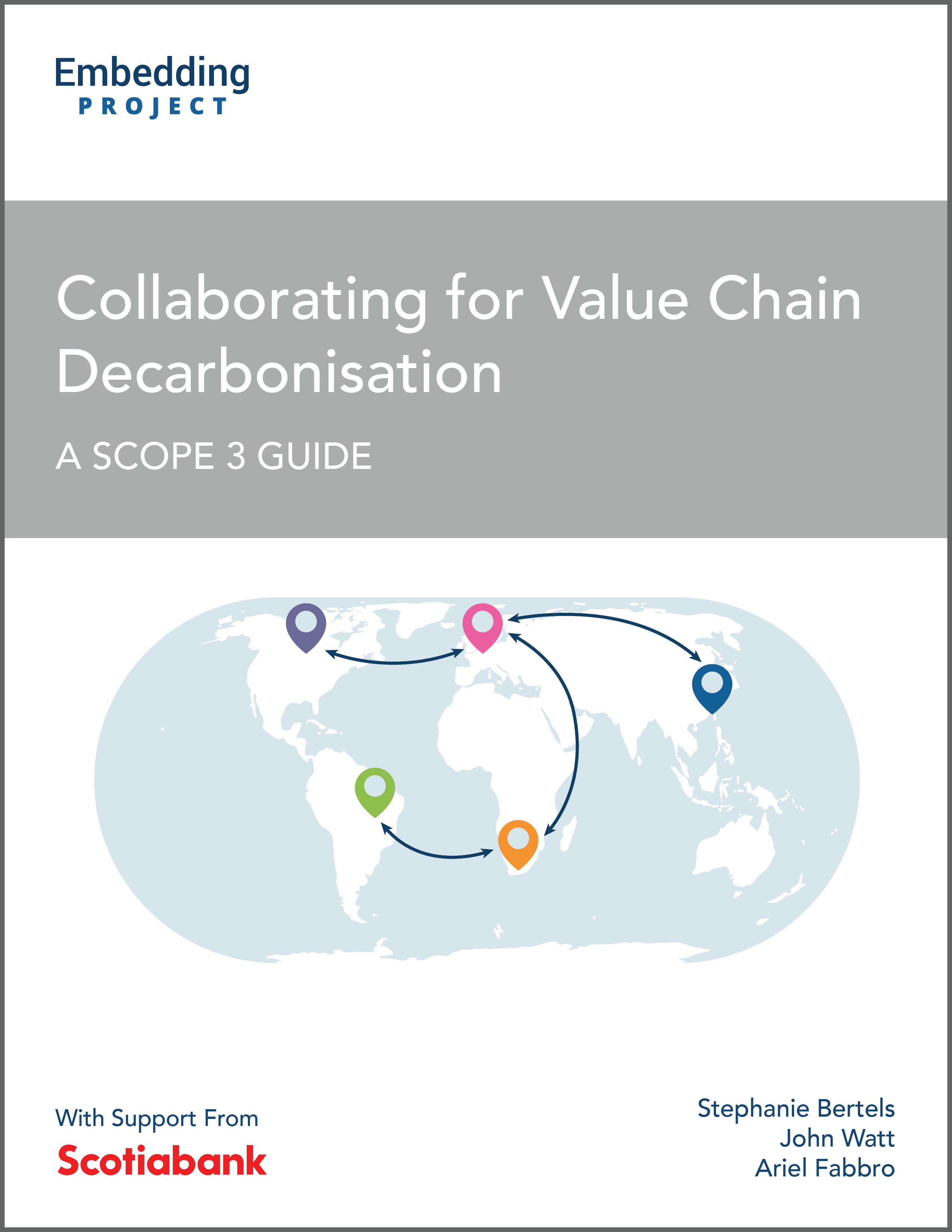Collaborate to understand root causes
Start by mapping out key value chain players or segments and their most significant sustainability issues (see the UNDERSTAND pathway for more on identifying sustainability impacts and risks). Then dig into the underlying causes of these issues. This should be informed by insights from your value chain partners.
Systems thinking principles tell us that the closer you get to the root of the issue, the more leverage there will be to influence systems change. To identify high leverage points, look beyond how an issue manifests in events and trends. Instead, examine the underlying norms, values, and structures driving the value chain system; how do they affect the issue?
The systems iceberg model conceptualises this idea. Use it to help identify a set of potential leverage points for the key sustainability issues in your value chain.
Seek out collaborators to expand your influence
Consider which potential leverage points you are best positioned to influence based on available resources, expertise, and, most importantly, collaborators. Taking collective action with other value chain actors allows you to greatly expand your influence on leverage points.¹ To find collaborators, consider the following: What other organisations share key suppliers or sourcing regions? Which organisations share your concerns, vision, or values? Which buyers participate in common initiatives? You may also find collaborators by developing or joining existing multi-stakeholder partnerships based on common interests. When forming partnerships, make sure to get on the same page by sharing your conceptual understanding of key leverage points.
EXAMPLE: Fair Cobalt Alliance²
Fairphone co-established an alliance to tackle labour abuses in artisanal cobalt mining, including child labour. The alliance includes industry leaders, governments, and NGOs, focusing on child labour prevention and providing education and alternative career training.³
EXAMPLE: ACT on Living Wages Initiative
ACT is an industry-wide initiative targeting the living wage issue in the textile and garment sector. Recognising that retailers alone cannot achieve 'living wages,' the initiative involves manufacturers and unions. It encourages collective bargaining, freedom of association, and responsible buying.⁴
EXAMPLE: Tony's Open Chain Platform
Tony's Chocolate initiated The Open Chain to help chocolate makers eradicate modern slavery and illegal child labour. The platform acknowledges that the "profit-centric, anonymous" chocolate supply chain is skewed, leaving farmers poor and powerless. The platform has designed 5 Sourcing Principles for buyers to follow.⁵, ⁶
EXAMPLE: Conveners find collaborators to tackle marine plastic pollution
NextWave Plastic, co-founded by Lonely Whale and Dell Technologies, is a group of companies fighting marine plastic pollution. Acting as an impartial convener, Lonely Whale identified potential collaborators among companies already integrating ocean-bound plastics into their supply chains.⁷, ⁸
EXAMPLE: The Accord on Fire and Building Safety in Bangladesh⁹
The Accord is a binding agreement by global brands and trade unions ensuring safety in the Bangladeshi ready-made garment industry after the Rana Plaza collapse. The Accord signifies a shift towards multi-stakeholder governance with an independent inspection program, public disclosure, brand-funded remediation, and worker empowerment via training and complaint mechanisms.





